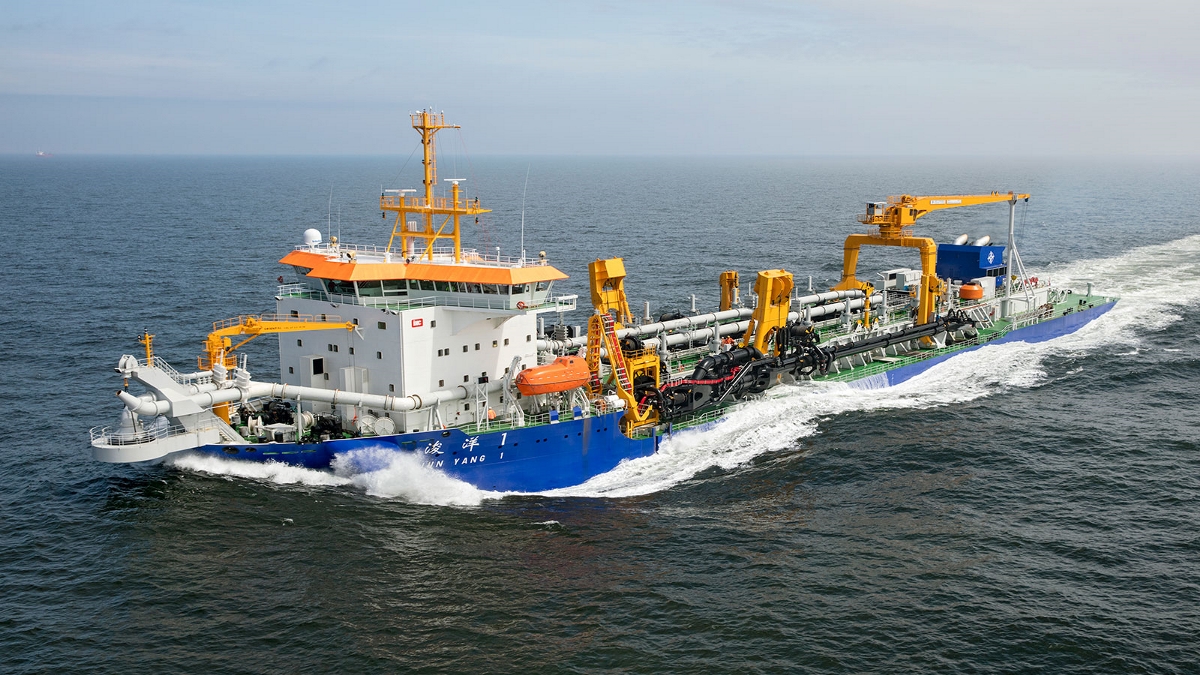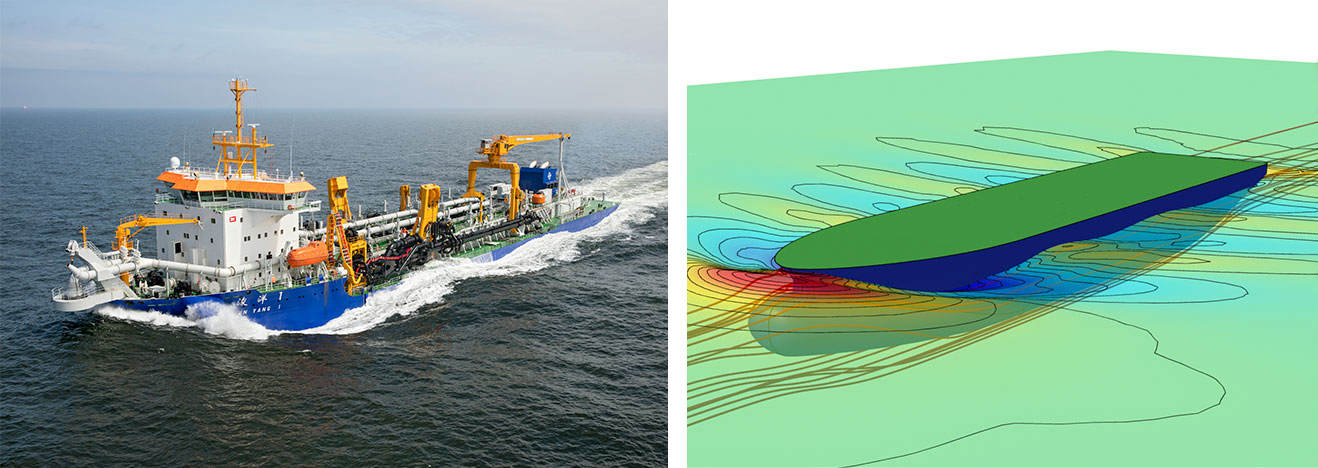Unlocking the unknown with computational fluid dynamics (CFD)

It’s every shipbuilder’s dream to look at the flow around a ship’s hull and understand what's really going on beneath the surface. Royal IHC is now gaining knowledge on a daily basis that can make this a reality. The secret lies with computational fluid dynamics (CFD).
Up to now, model testing was the primary way of understanding of the flows around a vessel. However, CFD is fast becoming the standard for interpreting a ship’s hydrodynamic performance.
The results of CFD are more detailed, faster and less expensive than previous methods, providing complete insights into the flow fields around a vessel. Royal IHC has been using FineMARINE (Numeca) in its ship design process for more than five years. For every new vessel that is built, we can analyse the flow at key phases in the design process, including concept and detailed design, and engineering.
The daily use of CFD in the practical ship design process enables us to constantly improve our skills. Our CFD results have been validated using full-scale measurements and model tests. This increases their reliability and leads to better prediction methods that can be used for future vessel design.

Defining optimal performance
Resistance and propulsion characteristics are important to the overall performance of a ship. Small changes in geometry or operating conditions can lead to significant variations. However, these can be easily modelled in CFD, providing quick and detailed full-scale results. In this way, we can compare a higher number of design options in less time, which leads to more efficient outcomes.
Another important aspect of a vessel’s performance is the wake flow quality. Appendages must be designed in such a way that optimises streamlines. Analysing the wake flow can minimise the chance of cavitation and maximise propeller performance.
Full-scale validation for this is provided via wake field measurements taken from a trailing suction hopper dredger (TSHD). These are measured by a laser doppler velocimetry (LDV) in front of the propeller.
The exact speed-draught combination is then simulated in FineMARINE. This gives us a reliable quantitative full-scale insight into what is happening in front of the propeller. Furthermore, this can be achieved without determining the scale effects which normally occur in the boundaries of model testing.

Efficient ship design
We can now combine our knowledge of existing vessel designs with detailed CFD and full-scale measurements. Combining this data gives us the opportunity to analyse specific trends, including how different dimensions affect resistance and how quantitative wake flow numbers relate to the overall efficiency of a propeller.
The outcomes generated give us confidence in CFD and its ability to produce reliable results that will be the basis for our next innovations in ship design. In turn, this will lead to better performing and increasingly efficient vessels for our customers.
Written by
Alex Kruijswijk

Stay up to date with the latest innovations
Wondering what we at Royal IHC are up to? Sign up for our newsletter where we highlight our latest innovations, new solutions and delve into market challenges.